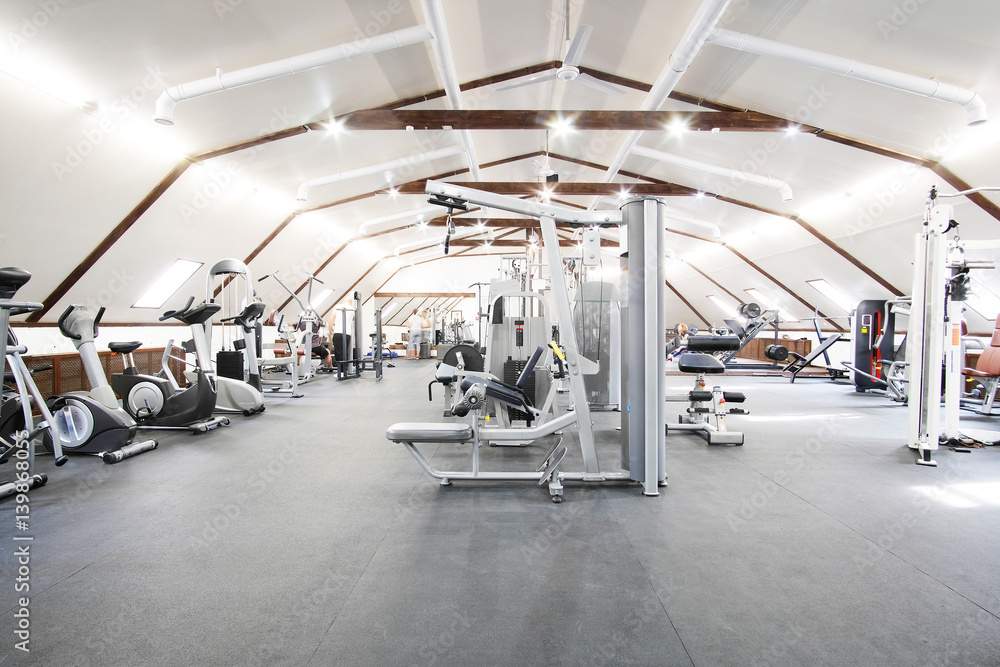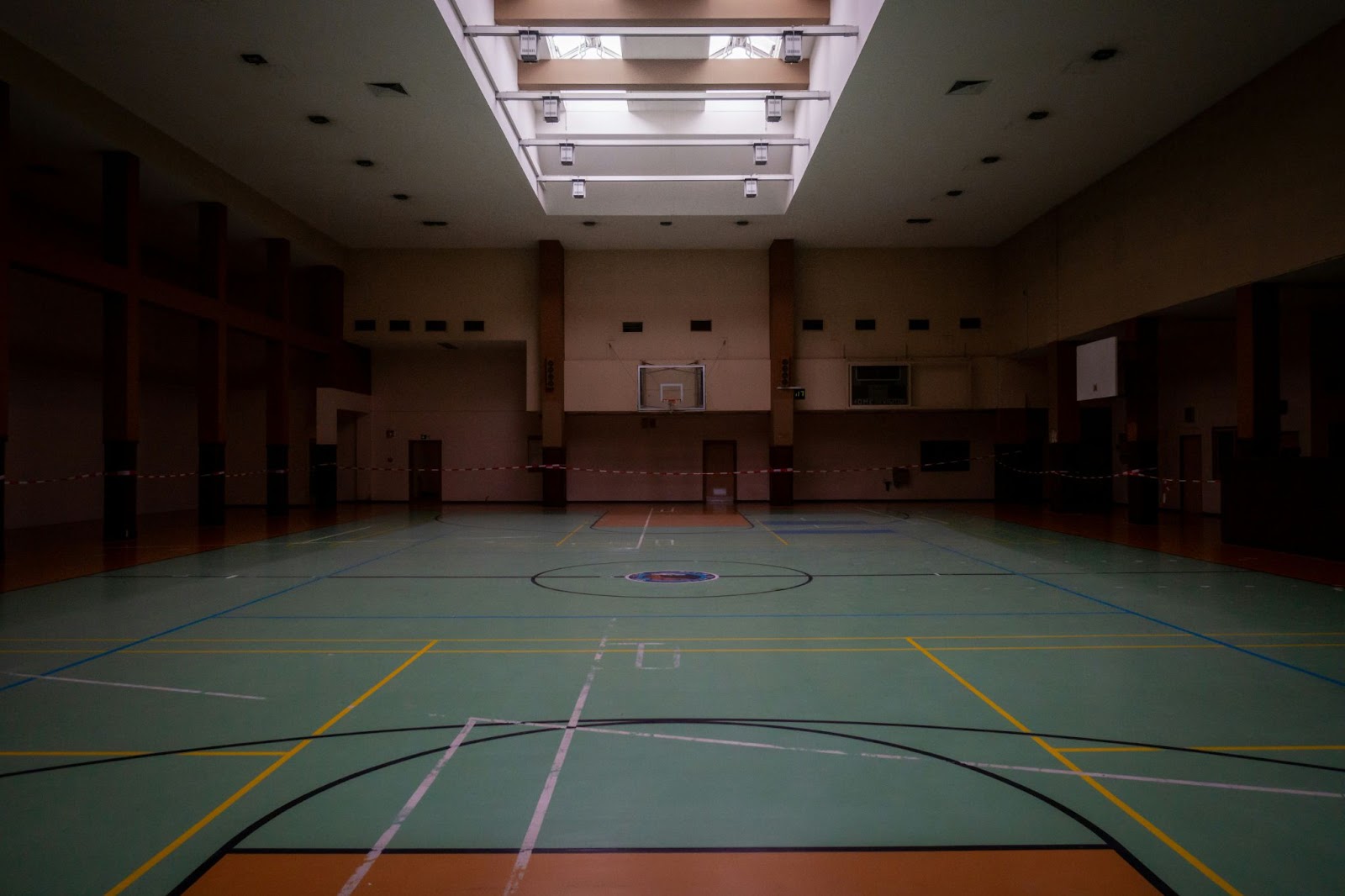Gymnasiums are essential facilities for physical fitness and recreational activities. Whether you’re looking to build a gymnasium for a school, community center, or sports club, understanding the costs involved is crucial.
As of the end of 2023, there were 41,190 gymnasiums in the United States. This number represents the most for any country and reflects the extensive network of fitness facilities available nationwide.
In this article, we will delve into the various factors that contribute to the expenses associated with gymnasium construction and ongoing operations.
Tables of Contents:
- Understanding the Basics of Gymnasium Construction
- Breaking Down the Costs of Building a Gymnasium
- Factors Influencing the Cost of a Gymnasium
- Ongoing Costs of Operating a Gymnasium
- Conclusion
- Frequently Asked Questions

Understanding the Basics of Gymnasium Construction
The Importance of Planning in Gymnasium Construction
Before embarking on any construction project, proper planning is paramount. This involves conducting a comprehensive needs assessment to determine the specific requirements of your gym building.
Factors to consider include the size, design, and layout of the facility, along with any custom features or amenities you desire.
Creating detailed architectural plans and obtaining the necessary permits will also contribute to the overall cost of construction. A well-executed plan ensures that the project stays on track and minimizes unexpected expenses.
Moreover, it is crucial to consider the location of the gym building within the community. Accessibility, parking availability, and proximity to other facilities can greatly impact the success and utilization of the gymnasium. A strategic location can attract more participants and spectators, ultimately enhancing the overall experience for all users.
Check out: Constructing Metal Building Gyms
Key Elements of a Gymnasium
A gymnasium typically consists of several essential components. These include the main sports hall, which should be spacious enough to accommodate various sports activities and equipment.
Other key elements include locker rooms, showers, and restrooms for both participants and spectators.
Furthermore, the design and layout of the gym builiding should prioritize safety and functionality. Adequate space around equipment, proper lighting to prevent injuries, and clear signage for emergency exits are all crucial aspects to consider during the construction phase.
These elements not only ensure a safe environment for users but also contribute to the longevity of the facility.
Additionally, it’s important to consider the installation of high-quality flooring, lighting, and ventilation systems. These factors enhance the overall functionality and comfort of the gymnasium, and they contribute to the overall cost of construction and ongoing maintenance.
Breaking Down the Costs of Building a Gymnasium
Building a gymnasium involves a detailed breakdown of costs to ensure a successful project.
Cost can vary depending on location, size, and type of facility. You might be looking at costs ranging from $50 to $250 per square foot, depending on whether you want to include exercise equipment or courts.
Let’s delve deeper into the various factors that contribute to the overall expenses of constructing a gymnasium.
Land Acquisition and Preparation Costs
Securing a suitable piece of land to build your gymnasium is a crucial initial step in the construction process. The cost of land acquisition varies based on factors such as location, size, and zoning regulations.
Additionally, site preparation expenses play a significant role in the overall budget. Tasks like clearing the land, grading for construction, and connecting utilities are essential for creating a solid foundation for the gymnasium.
Moreover, environmental assessments and surveys may be necessary to ensure compliance with local regulations and to address any potential environmental concerns. These additional steps in the land acquisition and preparation phase contribute to the overall costs of the project.
Construction Material and Labor Costs
Another significant aspect of building a gymnasium is the cost of construction materials and labor. High-quality materials are essential for constructing a durable and long-lasting facility.
From the foundation to the structural framework, walls, roofing, and finishing touches, the choice of materials impacts both the quality of the gymnasium and its overall cost.
In addition to materials, skilled labor is a critical component of the construction process. Experienced contractors, builders, and tradespeople play a vital role in ensuring the project is completed efficiently and to the required standards. The expertise and craftsmanship of the labor force contribute to the overall cost of construction.
Equipment and Facility Costs
Equipping the gym building with the necessary facilities and equipment is an essential part of the construction budget. Items such as sports equipment, seating arrangements for spectators, sound systems for events, and climate control systems all add to the overall expenses.
The specific requirements of the gymnasium, such as the type of sports to be played and the capacity of the facility, influence the costs associated with outfitting the space.
Furthermore, considerations such as maintenance costs, operational expenses, and potential future upgrades should also be factored into the budget. Planning for the long-term sustainability and functionality of the gymnasium requires a comprehensive assessment of equipment and facility costs.
Pro tip:
Steel is a popular choice for constructing gymnasiums because of its numerous benefits. Steel structures provide long-term value as they are durable and have a long lifespan. Additionally, steel requires low maintenance, saving on upkeep costs over time, making it an attractive option for businesses looking to optimize their budgets while ensuring a high-quality facility.
Factors Influencing the Cost of a Gymnasium
Size and Design of the Gymnasium
The size of the gymnasium is one of the primary factors influencing the cost. Larger facilities require more materials and labor, resulting in higher expenses. The complexity of the design also impacts the overall cost, as intricate architectural features may require additional resources.
When it comes to the design of a gym building, factors such as the height of the ceilings, the type of flooring used, and the inclusion of specialized equipment like basketball hoops or volleyball nets can all contribute to the final cost.
Each design element must be carefully considered to balance functionality with budget constraints.
Location and Local Building Codes
The location of the gym building plays a significant role in cost determination. Construction costs can vary depending on the geographic region and accessibility of resources.
Additionally, complying with local building codes and regulations may add expenses, as certain standards must be met to ensure safety and compliance.
In some areas, environmental factors such as seismic activity or extreme weather conditions may necessitate additional structural reinforcements, impacting the overall cost of the project.
It is crucial to account for these location-specific considerations during the planning stages to avoid unexpected expenses later on.
Custom Features and Amenities
Incorporating custom features and amenities into your gym building can significantly increase costs. Whether it’s specialized flooring for certain sports, unique lighting arrangements, or additional recreational spaces, these enhancements often come with a higher price tag.
Weighing the benefits against the budget is important when considering custom features.
Furthermore, the installation of advanced technology systems such as sound systems, video displays, or climate control mechanisms can add a layer of sophistication to the gymnasium but also impact the overall budget significantly.
Balancing the desire for cutting-edge amenities with the financial feasibility of the project is a crucial aspect of gymnasium construction planning.

Ongoing Costs of Operating a Gymnasium
The cost to build a gymnasium is one thing, operating it involves numerous ongoing costs that are crucial to consider for the smooth functioning of your facility.
In addition to the initial setup expenses, it is essential to plan for the continuous financial commitments that come with maintaining and running a gymnasium.
Maintenance and Repair Expenses
Once the gymnasium is operational, regular maintenance and repair costs must be factored in. This includes routine cleaning, equipment servicing, and addressing any wear and tear.
Planning for these ongoing expenses is essential to ensure the longevity and functionality of your facility. Regular maintenance not only keeps the gym equipment in optimal condition but also ensures a safe and hygienic environment for members.
Utility and Staffing Costs
Running a gymnasium involves utility expenses such as electricity, water, and heating or cooling. Depending on the size of the facility and the number of activities conducted, staffing costs may also be significant. Hiring qualified personnel to manage operations, safety, and customer service is crucial for a well-functioning gymnasium.
Properly trained staff not only enhance the overall member experience but also contribute to the efficient operation of the facility.
Did You Know?
The U.S. Bureau of Labor Statistics projects about 69,000 openings for fitness trainers and instructors each year, on average, over the decade. Many of these openings are expected to arise from the need to replace workers who transition to different occupations or exit the labor force. (Bureau of Labor Statistics)
Insurance and Licensing Fees
Protecting your gymnasium with appropriate insurance coverage is essential. Insurance costs may vary depending on the size and specific requirements of your facility. Additionally, there may be licensing fees or certifications required by local authorities that need to be factored into ongoing costs.
Ensuring that your gym building is properly insured and licensed not only safeguards your business from potential risks but also builds trust with your members and the community.

Conclusion
Deciding to build a gymnasium involves various costs that stem from construction, ongoing operations, and maintenance. Understanding the basics of gymnasium construction, breaking down the costs, and considering the factors that influence expenses allow for better planning and budgeting.
By carefully considering these factors and making informed decisions, you can create a high-quality gymnasium that meets your needs while staying within your budget.
Since 2001, SteelCo has been dropshipping Pre-Engineered Metal Building (PEMB) materials for custom-built gymnasiums nationwide. Our team of experts with 100+ years combined industry experience can assist with design, stamped engineering plans, and project support for timeline coordination, etc. while also offering guidance on building permits, zoning, and local ordinance.
As a locally-awarded General Contractor, our expertise also extends to comprehensive commercial design-build and construction projects across Georgia for a wide range of client industries and asset classes.
———————————-
Frequently Asked Questions
What is the average monthly expense for a gym?
The monthly expenses for a gym can range from around $15,600 to $32,700. This includes rent or lease costs, which can average between $5,000 and $10,000, and staff salaries, which can range from $6,000 to $12,000.
What is the average size of a gymnasium?
The average size of a gymnasium in the U.S. typically ranges from 42,400 square feet for a fitness-only facility to 70,300 square feet for a multipurpose facility.
————————————
Check out these related articles:
> A Guide To Building An Indoor Sports Complex
> Building The Perfect Indoor Baseball Field Building
> How Much Does A Pre-Engineered Building Cost?
> Why Cost-Effective Steel Buildings Can Be The Right Option
























